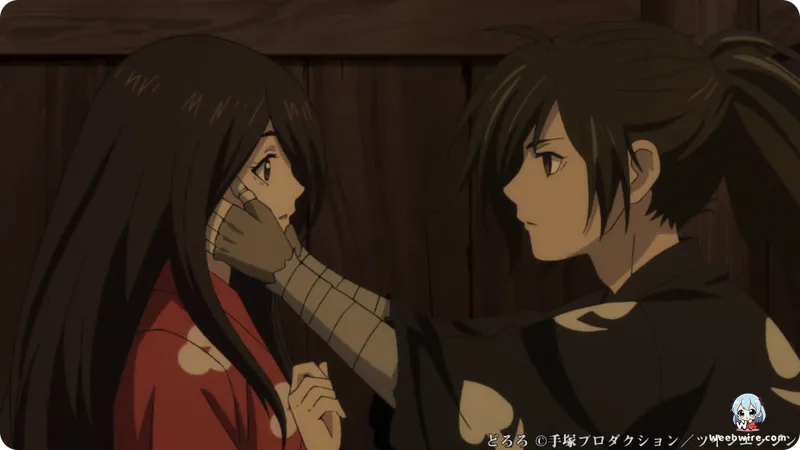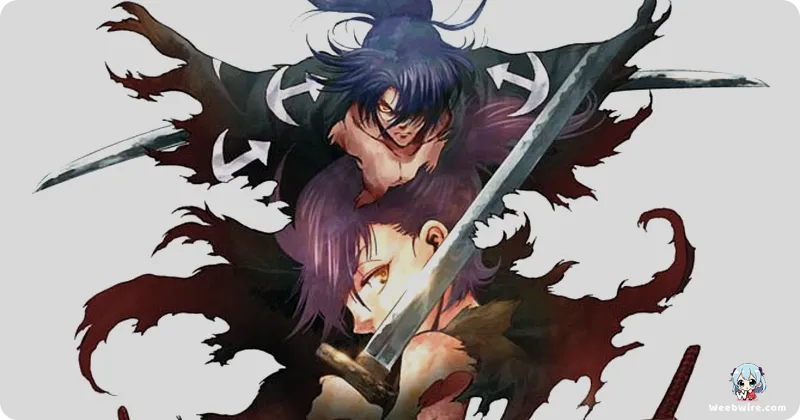Revealed: The Fascinating Hidden Facts Behind MAPPA's 'Dororo' Anime

MAPPA's 2019 anime adaptation of Osamu Tezuka's timeless classic, Dororo, stands as a monumental achievement in modern animation. It captivated audiences worldwide with its grim aesthetics, visceral action sequences, and a profound, unflinching exploration of humanity's darker facets and its enduring capacity for hope. While many viewers are intimately familiar with Hyakkimaru's arduous and compelling quest to reclaim his stolen body parts, the series itself is a veritable treasure trove of fascinating, often lesser-known facts and unique production insights. These hidden gems elevate it from a mere faithful retelling of a classic to a truly modern masterpiece, revealing the meticulous depth, ingenuity, and creative courage behind its acclaimed reimagining.
The Curious Origin of Dororo's Name
One particularly delightful, yet often overlooked, piece of trivia concerns the very name of the titular character, Dororo. Far from being a whimsical or arbitrary choice, her name holds a charming and deeply symbolic origin. It stems directly from Hyakkimaru's innocent mispronunciation of 'dorobō,' the Japanese word for 'thief.' In his nascent state of regaining his senses and language, having spent years devoid of human interaction and sensory input, Hyakkimaru's childlike attempt to label his mischievous, yet loyal, companion became her enduring name. This subtle detail not only adds an endearing layer of innocence to Hyakkimaru's character but also beautifully highlights the unconventional, yet profound, bond forming between the two leads. It's a testament to Tezuka's original genius, faithfully upheld and even enriched by the 2019 anime adaptation, showcasing how even small linguistic nuances can carry significant emotional weight.
A Drastic Reduction: From 48 to 12 Body Parts
A striking and pivotal difference between Osamu Tezuka's original manga and MAPPA's 2019 anime adaptation lies in the sheer scale of Hyakkimaru's predicament. While the 2019 anime depicts Hyakkimaru needing to reclaim 12 specific body parts from the demons who stole them, Tezuka's original manga presented a staggering 48. This significant reduction was a deliberate and highly effective creative choice by MAPPA. By streamlining the number of parts, the studio was able to focus on more impactful, emotionally resonant episodic battles, allowing for deeper character development for both Hyakkimaru and Dororo, as well as the supporting cast. This decision ensured that each victory felt more significant and contributed more directly to the overarching narrative and Hyakkimaru's gradual transformation. Furthermore, the animators meticulously crafted Hyakkimaru's movements, from his initial stiff, almost robotic gait to his growing fluidity as he regained his limbs. They also visually depicted his unique 'sight' of souls as pulsating colored orbs, adding profound layers to his sensory deprivation and his unique perception of the world.

Translating Tezuka's Vision: Art Style and Emotional Nuance
MAPPA faced the formidable task of translating Tezuka's distinct, almost cartoony art style, which was characteristic of his era, into a grittier, more realistic, and visually intense aesthetic suitable for a modern audience, all while meticulously preserving the original's profound thematic essence. The studio struck a delicate and masterful balance, imbuing the world of Dororo with a palpable sense of harsh reality, reflecting the brutal feudal era in which the story is set. A subtle yet profound triumph of the animation was the depiction of Hyakkimaru's emotional growth through minute, painstaking physical changes. As he gradually reclaimed his voice, his eyes, and his skin, his expressions slowly became more nuanced and human. His movements transitioned from mechanical and rigid to increasingly fluid and natural, and his interactions with others grew more complex and empathetic. This was a painstaking effort, often conveyed without the need for dialogue, relying instead on the power of visual storytelling to convey his internal journey from a cursed, almost inhuman being to a fully realized individual.
Crafting a New Conclusion: The Manga's Unfinished Legacy
The original Dororo manga, surprisingly, suffered an abrupt cancellation due to declining popularity during its initial run, leaving its compelling story without a definitive conclusion for decades. This presented a unique challenge and opportunity for both the 1969 and 2019 anime adaptations, as they each had to craft their own endings to provide closure to Tezuka's unfinished narrative. The 2019 anime, in particular, took significant yet well-considered creative liberties, especially concerning the ultimate fate of Tahomaru, Hyakkimaru's brother, and the nature of their final confrontation. These changes were, for the most part, exceptionally well-received by both critics and fans. They provided a more conclusive and emotionally resonant resolution that not only honored Tezuka's original themes of humanity, sacrifice, and the cyclical nature of violence but also delivered a powerful and poignant message about choices, consequences, and the enduring power of hope in a world steeped in despair. The anime's ending felt earned and impactful, leaving a lasting impression.
The Power of Voice: Hiroki Suzuki's Hyakkimaru
Finally, the exceptional voice acting in Dororo (2019) played an absolutely critical role in its widespread success and emotional impact. Hiroki Suzuki, a renowned stage actor, undertook the incredibly challenging and unique role of Hyakkimaru. For much of the initial run of the series, Hyakkimaru communicated almost exclusively through raw grunts, pained screams, and guttural sounds, conveying profound pain, unbridled rage, and deep confusion without the benefit of articulate words. Suzuki's phenomenal ability to express such a vast and raw range of emotion through these limited vocalizations added immense depth and pathos to the character, making his suffering and gradual awakening incredibly palpable. As Hyakkimaru slowly regained his senses and physical capabilities, Suzuki's portrayal subtly shifted. He gradually introduced more human inflections, a growing understanding of language, and a nuanced expression of his evolving emotional landscape. This was a testament to his remarkable skill as a voice actor and the director's precise and visionary guidance. This meticulous attention to character portrayal, particularly through such a challenging vocal performance, is a hallmark of Dororo (2019) and contributes significantly to its enduring appeal, critical acclaim, and its status as a truly unforgettable anime.
Credits
Dororo
Author
Osamu Tezuka
Cover Art
Satoshi Iwataki (Character Designer for 2019 anime)
Studio
MAPPA
Publisher
Akita Shoten (for manga tankōbon)
Producers





